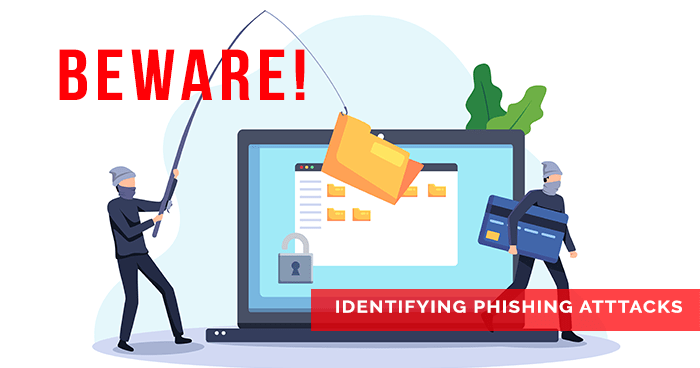Can you spot when you’re being phished?
Identifying phishing can be harder than you think. Phishing is an attempt to trick you into giving up your personal information by pretending to be someone you know. Can you tell what’s fake?
Try this ONLINE QUIZ from Google.com. You may be surprised how hard it is to spot an illegal phishing email message. By taking this quiz, you can learn some quick checks you can make to prevent you from clicking on a dangerous link. You don’t want to download a virus that can steal your personal or financial information.
What to do when you discover phishing?
If you have already clicked on a malicious link, you should follow these steps as outlined by MentalFloss.com:
- TAKE A DEEP BREATH.
Phishing schemes have become increasingly sophisticated, so don’t beat yourself up if you fall for one. Take a few deep breaths to calm down, clear your head, and plan your next steps. - CHANGE YOUR PASSWORDS.
If you clicked a link that directed you to a site that appeared to be your bank, email service, or social media account, for example, log in to the real site and change your password. - CONTACT THE ORGANIZATION THAT WAS SPOOFED.
Report the phishing scheme to the company—whether it’s your email provider, your utility company, or your employer—that the phisher impersonated. You can also report the details of your experience to the Anti-Phishing Working Group or the FBI’s Internet Crime Complaint Center. - SCAN YOUR COMPUTER FOR VIRUSES.
Whether you downloaded an attachment or clicked on a link, it’s a good idea to scan your computer for viruses and malware. - WATCH OUT FOR WARNING SIGNS OF IDENTITY THEFT.
If you’ve revealed any financial information or other sensitive data like your Social Security number, you need to watch for signs of identity theft. - FILE A REPORT WITH THE FTC.
If you see signs that your identity has been stolen, report the theft to the Federal Trade Commission (FTC). The FTC will guide you through the steps to take. - PROTECT YOURSELF AGAINST FUTURE PHISHING SCHEMES.
Protect yourself against future phishing schemes. Be careful when you check your inbox and pause before opening, clicking links, or downloading files from suspicious emails.


